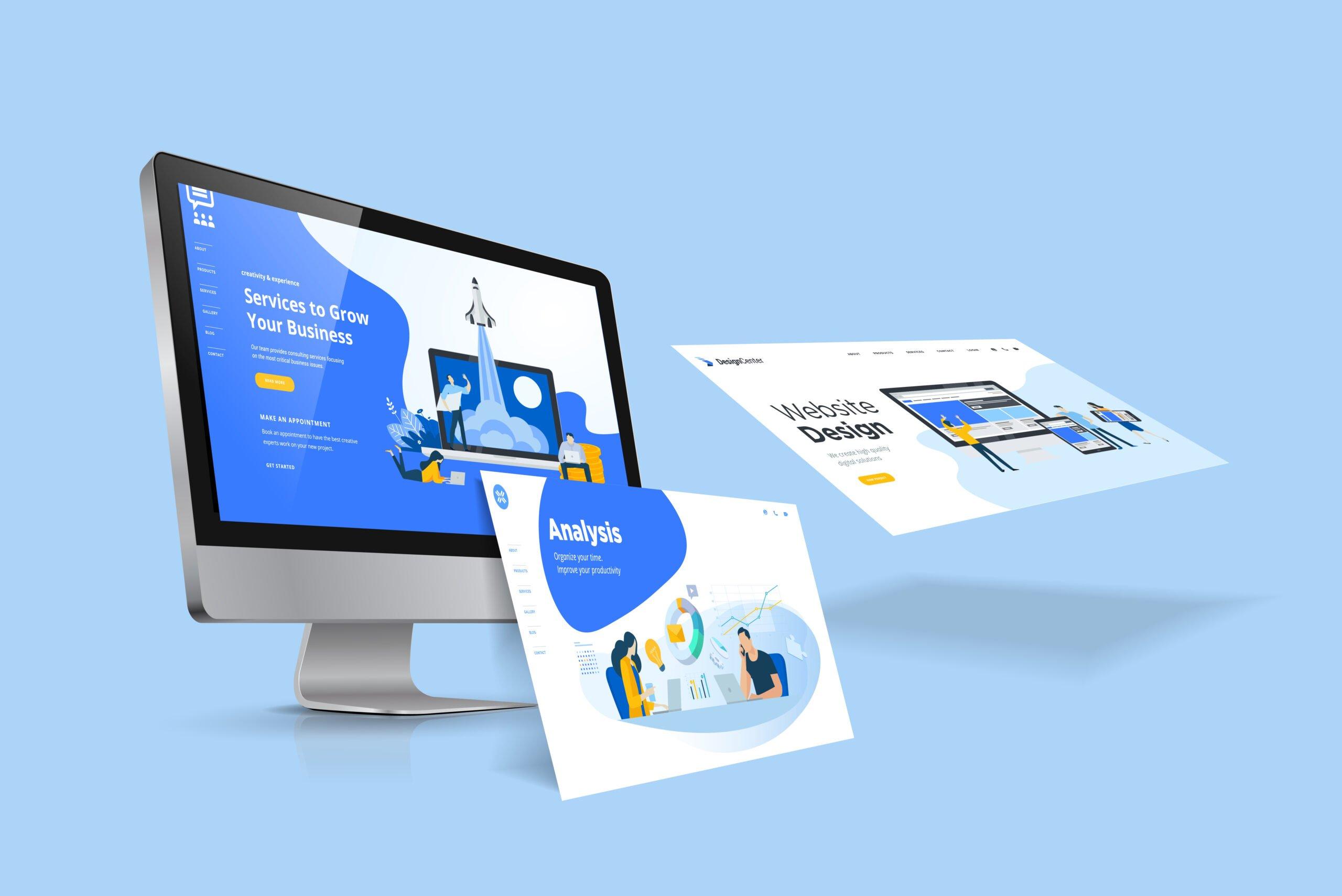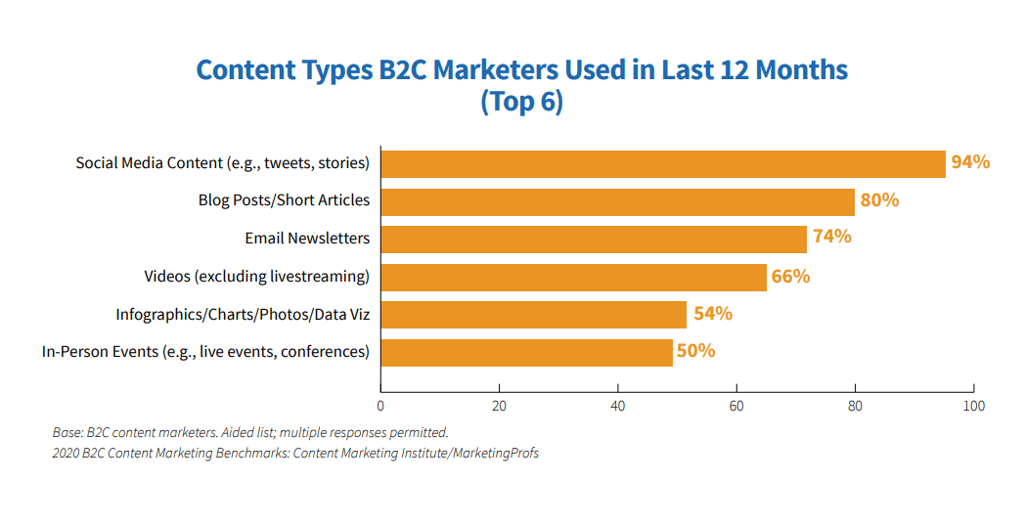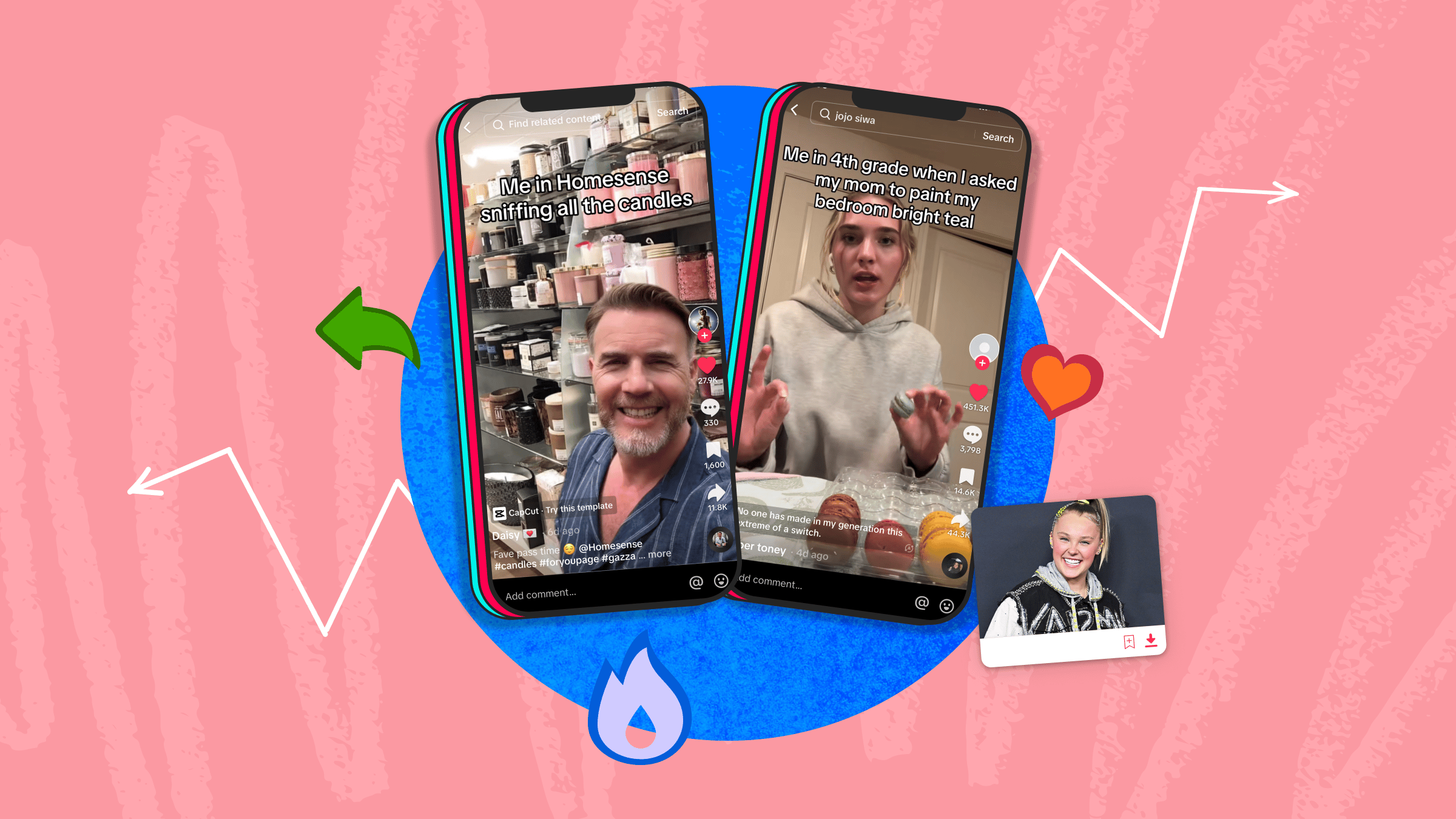Want to to give your business a boost? From building a website to creating a content strategy, here’s 5 ways to generate more sales for your small business.

When starting a new business, small business owners have a lot to consider – branding, marketing, sales, social media, setting up a website, as well as creating products and services your customers will love. If you want to give your brand a boost, here’s 5 foolproof ways to convert customers and generate more sales for your small business.
1. Build a Professional Website
Building a professional, responsive website is an imperative step for small businesses, as most modern consumers will look for information about your products and services online. Here are a few basic things to consider when setting up your website.
Register a Domain Name
When registering a domain name for your website, it’s essential to consider various factors that will shape your online presence. Recent statistics on domain registrations reveal that, on average, domain names consist of about nine characters. This statistic underscores the significance of selecting a memorable and concise name that aligns seamlessly with your business name and branding. Remember that your domain name will also be used for your email address, so it’s important to make sure that it aligns with your business name and branding. Find the right domain extension and choose the one that fits, is commercial, and is easy to remember.
To register your domain, you need to find an accredited registrar. You will also need to find a web host to get your domain up and running online. Fees for web hosting services are paid monthly and depend on the size of your website and how many visitors it receives.
Use a Page Builder
Your website needs to be not only informative, but also visually appealing. While it’s possible to design a website from scratch, for many small businesses, it’s much more convenient and time-efficient to use a web page builder.
Here are some of the most popular website builders:
- Elementor – Elementor is one of the leading website page builders online. It allows you to build everything from landing pages and ecommerce stores, to full-blown websites. Envato Elements also offers a huge variety of website template kits to get your website up and running super quickly and easily.
- WordPress – WordPress is a reliable and user-friendly web page builder that provides ready-made themes optimized for mobile devices.
- Wix – Wix provides enterprise-grade security. It also allows you to study in-depth marketing and sales analytics and identify which campaigns work best for your business.
- Squarespace – Squarespace allows you to create beautiful portfolios, and add videos and images. Squarespace also allows you to edit all pages using their built-in Image Editor.
Most page builders charge a subscription-based fee, but they’re sure to save you money in the long run. If you’re not sure where to start, these online courses will show you how to build your website, create sales pages, and manage your content.
2. Develop a Marketing Plan
Developing a marketing plan and social media marketing strategy is essential for the growth of your small business. As its simplest, a marketing plan should outline the strategies, goals, KPIs and other metrics for your eCommerce business to have a clear pathway
Your marketing plan should:
- Analyze the market– This can help you identify your strengths, weaknesses, and any areas that might need improvement. Be sure to identify your target audience and research your competitors. Rather than copying their strategies, learn from their mistakes and gather data that can help you develop your own marketing plan.
- Establish your goals – Define what you want your business to achieve. Do you want it to expand? Would you like to better manage your resources? What specific KPIs do you want to reach?
- Outline your strategy – Create a definitive outline of actions that you need to take to achieve your goals. Establish what marketing channels you need to use and brainstorm campaigns that will work for your customer base.
- Allocate your budget – This will ensure you spend money wisely on activities and campaigns that contribute to your goals.
Remember to tailor your marketing plan to your business’s needs. While it’s recommended to stick to proven methods, you can still branch out and try new tactics if it fits your brand and target audience.
3. Create a Content Strategy
A content strategy is essential for getting your brand out there. It includes the planning, promotion, execution, and ongoing management of your marketing efforts. Without a content strategy, raising brand awareness and keeping your marketing efforts consistent can be a difficult task.
According to the Content Marketing Institute, well over 50% of marketers report that they expect to increase their spending on video content, social media, events, owned-media assets, and paid media in 2022, so make sure to include these in your content strategy to stay relevant amongst your competitors.
Understand Your Target Audience
If you want to convert more customers and generate more sales for your business, you need to know everything about your target audience – the customers you’re going to advertise to.
Ask yourself the following questions:
- Who is your target audience?
- What is their age, gender, occupation?
- What channels do they use most?
- Do you have a secondary target audience?
It can also be helpful to create customer personas, which are profiles detailing the characteristics of your ideal customers. Furthermore, keep in mind that not all your customers will be the same. Determine how to diversify your approach to include the biggest pool of customers possible. For instance, make a quiz that captures the audience’s attention, engages them, and helps you segment the audience according to what they find valuable.
Analyze Your Customers’ Behaviour
Analytics can help you determine how clients, customers and consumers engage with your company and behave on your website. This analysis can allow you to map out a clear customer journey and improve your user experience. Customer behavior analysis allows you to:
- Personalize user experience – knowing what drives your customers’ behavior allows you to tailor your approach and personalize your customer experience to better meet their needs.
- Prevent customer churn – when you understand how your customers behave throughout their purchasing journey, you can identify and then prevent the obstacles that cause them to leave.
- Predict future behavior – learning from past data and experiences makes it possible for you to predict how your customer base will behave in the future.
4. Optimize Your Website for SEO
Search engine optimization (SEO) is a crucial part of generating website sales. Search engines crawl and index websites according to their content, so optimizing your content for search engines will allow both potential and existing customers to find your website more easily.
Here are a few ways to optimize your website for SEO:
- Conduct thorough keyword research to understand their importance and how they are used.
- Include keywords in your content, but don’t overdo it. Search engines will penalize you for including them in your content haphazardly.
- Create high-quality content that is authentic to your brand. Don’t post anything you don’t 100% stand behind.
- Last, but not least, track your growth. Keep a close eye on metrics like conversion and bounce rate. This will allow you to monitor traffic on your pages and identify trends.
5. Develop a Marketing Campaign
We tend to think of a sales campaign as dry presentation slides on a screen in a conference room – but a sales campaign can take on many forms. You can create social media campaigns, interactive presentations or events, email campaigns, and many more. It’s really up to you, as long as your campaign aligns with your brand and drives leads to your website, online store, or wherever else you determine.
Focus on Your Social Media Presence
These days, social media is all the hype. Engage with your customers on the platforms they use the most. All in all, social media is a great way not only to advertise to your followers but also to directly sell to them.
You can use paid advertisements to effectively target your customers, or use affiliate or influencer marketing to advertise your products and services. You can try other fancy ways to market your products or services, say, you can mention a QR code (generate one using a QR code generator) in Instagram stories. No matter how you use it, there’as no doubt that social media is a great way to engage with your customer base.
As detailed in the graph below from the Content Marketing Institute, you can see which social media platforms are the most effective for distributing content. Keep in mind that this can vary depending on your target demographic. Younger people may prefer Instagram or TikTok, while to reach a more mature audience, you can stick to trusty Facebook.
Providing customer support on social media is as important as advertising itself. In today’s digital age, your customers expect immediate access to your business, whether they have inquiries, concerns, or issues. To achieve this, it’s imperative to train your customer care agents in the art of delivering swift, personalized, and solution-driven support across social media platforms. By consistently offering top-notch customer support on social media, you not only resolve immediate concerns but also build trust, foster loyalty, and ultimately, generate more sales for your small business.
Use Email Marketing
Sending out regular emails to your customer base will help to keep your audience engaged and keep your brand top of mind. In fact, a recent survey by Service Direct reveals that 62% of customers opt-in to small business email newsletters and 80% will take advantage of a follow-up promotion offered by a business they like. Using email sequence software that follows all email security standards, like DMARC or DKIM can help you achieve consistent engagement and make your email marketing more efficient and effective.
Email automation allows you to create emails that reach the right people with the right message at the right time – without doing the heavy work. Each email can cover specific benefits of your business, products or sales offer, customer testimonials, or even a glimpse into your business so your customers can connect with your brand.
Personalization is another great way to increase engagement among your email recipients. Use your client’s first name, send them a birthday card, or remind them of the anniversary of them signing up to your newsletter or purchasing from your business. Making your customers feel valued will make them more likely to buy from your brand and recommend you to their friends and family.
Create Video Content
Many people aren’t willing to read long paragraphs and spend their time sifting through blocks of text. That’s where videos come in handy. Utilizing video marketing is a great way to generate more engagement and drive leads to your website.
In addition to posting videos on social media, you can even create a video sales letter (VSL) to embed on your website. A VSL is a sales pitch you make for your customers. It can be as short or as long as you need it to be — but it must cover your offer’s benefits and end with a call-to-action. The great thing about a VSL is that it allows you to show your brand’s personality as well as your brand’s USP (unique selling points), so your audience will recognize and relate to your style.
Be Transparent & Consistent
Maintaining trust with your audience is crucial to creating returning customers. Transparency is one of the most valued aspects of customer interactions. If you treat your customers with respect, they will be more likely to trust your brand.
Similarly, consistency is key to building a strong brand and a successful business. To achieve it, ensure that you have clear, organized processes for each area of your business. Check if there’s room for process improvement if you already have a workflow. Decide who will create content, who will post and update it, or any other actions that need to be taken.
Providing a consistent customer experience will enable your customers to recognize your brand and trust your business throughout every step of their customer journey. Make sure to keep your brand identity consistent across all the channels you use, including your website, social media channels and email marketing.
To Wrap Up…
Once you learn how to generate sales from your own platform, your business and brand is sure to grow. And if you continue striving to provide the best possible user experience, your customer base will continue to expand.
Guest Author: Oliver Stasinszky
Oliver Stasinszky is an outreach team lead at LiveAgent, with an e-commerce and customer service background. Passionate about writing, reading, and learning how to play any musical instrument he comes across.



















